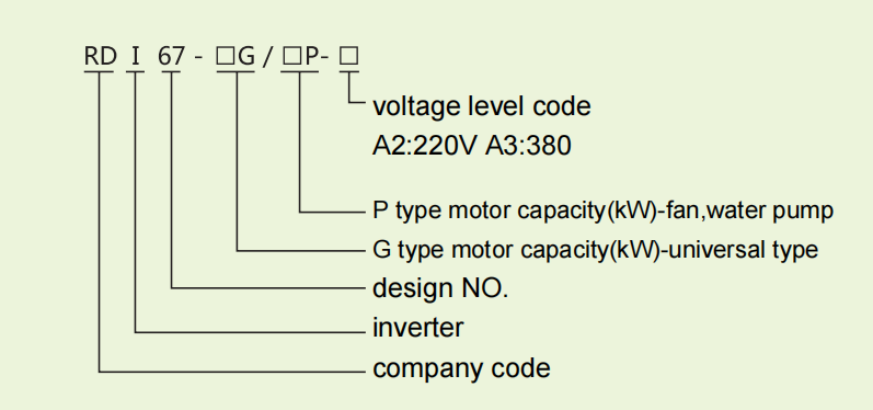The frequency converter is mainly composed of rectifier (AC to DC), filter, inverter (DC to AC), braking unit, driving unit, detection unit, micro processing unit, etc. The inverter adjusts the voltage and frequency of the output power supply by breaking the internal IGBT, and provides the required power supply voltage according to the actual needs of the motor to achieve the purpose of energy saving and speed regulation. In addition, the inverter has many protection functions, such as overcurrent, overvoltage, overload protection, etc.
1. Frequency conversion energy saving
2. Power factor compensation energy saving - due to the role of the internal filter capacitor of the inverter, the reactive power loss is reduced and the active power of the grid is increased
3. Soft start energy saving - using the soft start function of the frequency converter will make the starting current start from zero, and the maximum value will not exceed the rated current, reducing the impact on the power grid and the requirements for power supply capacity, and extending the service life of equipment and valves. The maintenance cost of the equipment is saved.

2.1 Humidity: Relative humidity shall not excced 50% at the Max temperature 40°C, and higher humidity could be accepted at lower temperature. The condensation must be taken care which is caused by temperature change.
When temperature is above +40°C, loaction should be well-ventilated. When environment is unstandard, please using telecontrol or electrical cabinet. Inverter working life is affected by install location. Longtime continuous using, the life electrolytic capacitor in inverter would not exceed 5 years, cooling fan life would not exceed 3 years, exchange and maintenance should be done earlier.
Specification
Voltage type: 380V and 220V
Applicative Motor capacity: 0.75kW to 315kW
Specification see Table1
| Voltage | Model No. | Rated capacity (kVA) | Rated output current (A) | Applicative motor (kW) |
| 380V three-phase |
RDI67-0.75G-A3 | 1.5 | 2.3 | 0.75 |
| RDI67-1.5G-A3 | 3.7 | 3.7 | 1.5 | |
| RDI67-2.2G-A3 | 4.7 | 5.0 | 2.2 | |
| RDI67-4G-A3 | 6.1 | 8.5 | 4.0 | |
| RDI67-5.5G/7.5P-A3 | 11 | 13 | 5.5 | |
| RDI67-7.5G/11P-A3 | 14 | 17 | 7.5 | |
| RDI67-11G/15P-A3 | 21 | 25 | 11 | |
| RDI67-15G/18.5P-A3 | 26 | 33 | 15 | |
| RDI67-18.5G/22P-A3 | 31 | 39 | 18.5 | |
| RDI67-22G/30P-A3 | 37 | 45 | 22 | |
| RDI67-30G/37P-A3 | 50 | 60 | 30 | |
| RDI67-37G/45P-A3 | 61 | 75 | 37 | |
| RDI67-45G/55P-A3 | 73 | 90 | 45 | |
| RDI67-55G/75P-A3 | 98 | 110 | 55 | |
| RDI67-75G/90P-A3 | 130 | 150 | 75 | |
| RDI67-93G/110P-A3 | 170 | 176 | 90 | |
| RDI67-110G/132P-A3 | 138 | 210 | 110 | |
| RDI67-132G/160P-A3 | 167 | 250 | 132 | |
| RDI67-160G/185P-A3 | 230 | 310 | 160 | |
| RDI67-200G/220P-A3 | 250 | 380 | 200 | |
| RDI67-220G-A3 | 258 | 415 | 220 | |
| RDI67-250G-A3 | 340 | 475 | 245 | |
| RDI67-280G-A3 | 450 | 510 | 280 | |
| RDI67-315G-A3 | 460 | 605 | 315 | |
| 220V single-phase |
RDI67-0.75G-A3 | 1.4 | 4.0 | 0.75 |
| RDI67-1.5G-A3 | 2.6 | 7.0 | 1.2 | |
| RDI67-2.2G-A3 | 3.8 | 10.0 | 2.2 |
Single phase 220V series
| Applicative motor (kW) | Model No. | Diagram | Dimension: (mm) | |||||
| 220 series | A | B | C | G | H | intall bolt | ||
| 0.75~2.2 | 0.75 kW~2.2kW | Fig2 | 125 | 171 | 165 | 112 | 160 | M4 |
Three phases380V series
| Applicative motor (kW) | Model No. | Diagram | Dimension: (mm) | |||||
| 220 series | A | B | C | G | H | intall bolt | ||
| 0.75~2.2 | 0.75kW~2.2kW | Fig2 | 125 | 171 | 165 | 112 | 160 | M4 |
| 4 | 4kW | 150 | 220 | 175 | 138 | 208 | M5 | |
| 5.5~7.5 | 5.5kW~7.5kW | 217 | 300 | 215 | 205 | 288 | M6 | |
| 11 | 11kW | Fig3 | 230 | 370 | 215 | 140 | 360 | M8 |
| 15~22 | 15kW~22kW | 255 | 440 | 240 | 200 | 420 | M10 | |
| 30~37 | 30kW~37kW | 315 | 570 | 260 | 230 | 550 | ||
| 45~55 | 45kW~55kW | 320 | 580 | 310 | 240 | 555 | ||
| 75~93 | 75kW~93kW | 430 | 685 | 365 | 260 | 655 | ||
| 110~132 | 110kW~132kW | 490 | 810 | 360 | 325 | 785 | ||
| 160~200 | 160kW~200kW | 600 | 900 | 355 | 435 | 870 | ||
| 220 | 200kW~250kW | Fig4 | 710 | 1700 | 410 | Landing cabinet installation | ||
| 250 | ||||||||
| 280 | 280kW~400kW | 800 | 1900 | 420 | ||||
| 315 | ||||||||
Appearance and mounting dimension
Shape size see Fig2, Fig3, Fig4, operation case shape see Fig1